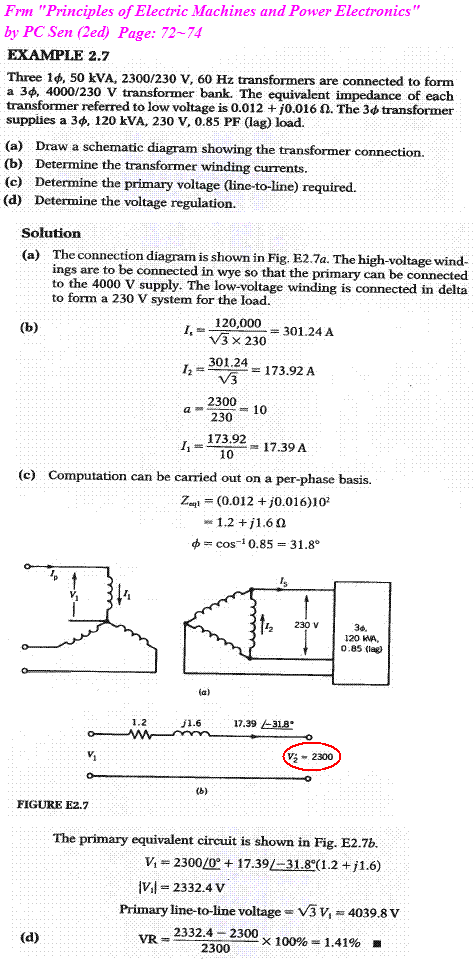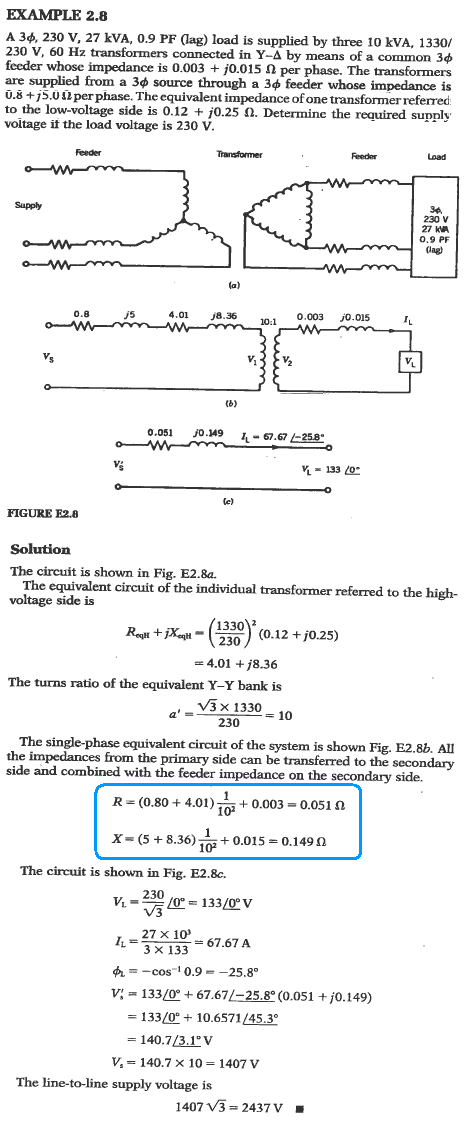powersys
Advanced Member level 1

3 phase 230 transformer circuit
Hello,
Turn ratio, a = 2300/230 = 10 (for each transformer)
Let's look at Figure E2.7, do u think the value of V'2 is correct?
In my opinion, V'2 should be (√3) x 230 x 10 = 3984 V. What do you reckon?

Hello,
Turn ratio, a = 2300/230 = 10 (for each transformer)
Let's look at Figure E2.7, do u think the value of V'2 is correct?
In my opinion, V'2 should be (√3) x 230 x 10 = 3984 V. What do you reckon?



